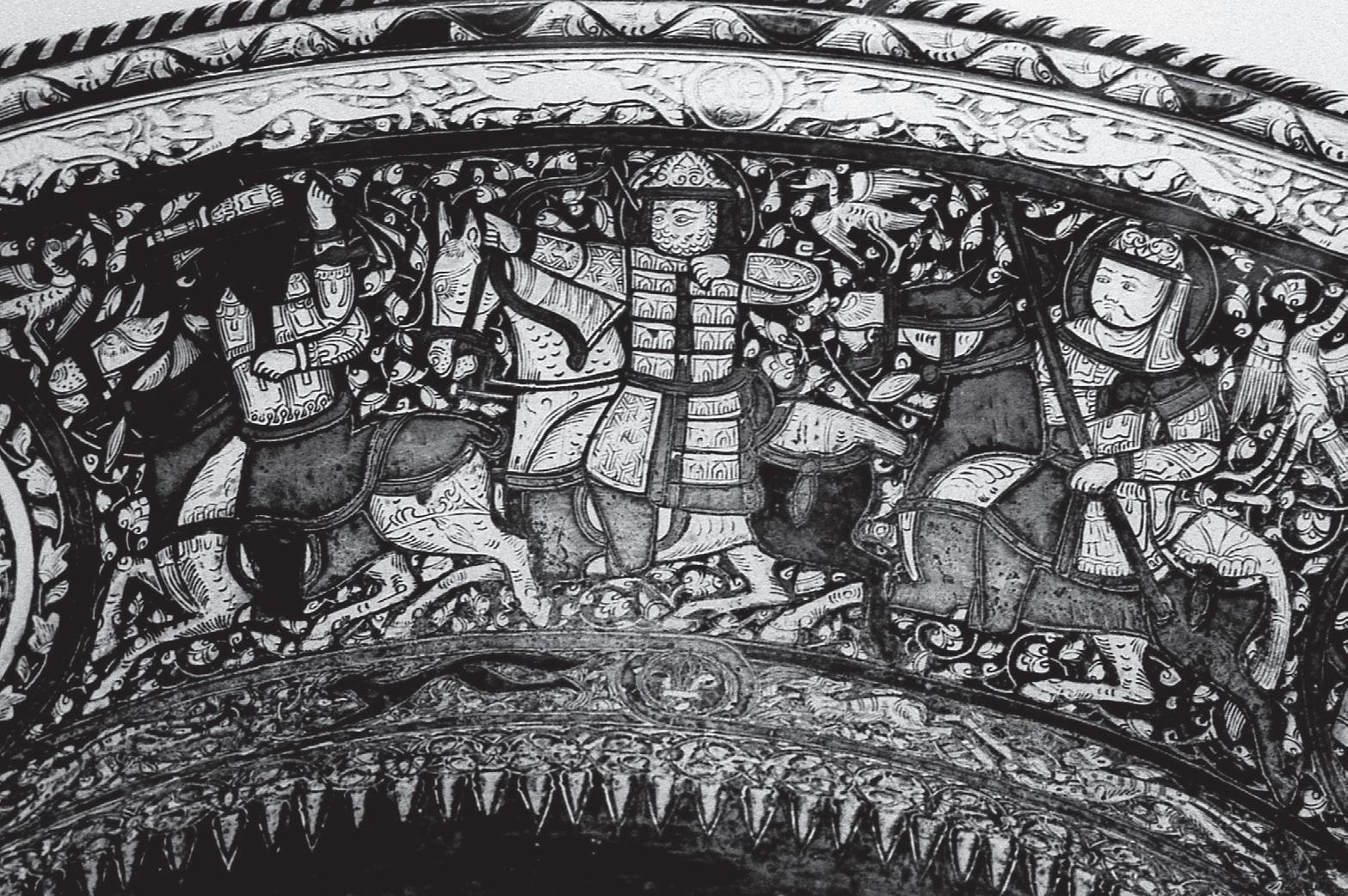
Find the perfect fit with Amazon Prime. Try Before You Buy.
Detail on the inside of the Baptistère de Saint Louis



Photograph 28. Detail from the inlaid decoration of the “Baptistère de Saint Louis”, Mamlūk, Egypt, late 13th-early 14th century (Musée du Louvre, Paris, France).
Note the brimmed helmets or hats and perhaps laminated or “hooped” cuirasses.
Source: p.233, "The Iconography of a Military Elite: Military Figures on an Early Thirteenth-Century Candlestick (Part II)" by David Nicolle, in Mamlūk Studies Review Vol. 19, 2016
Referenced on p8, The Mamluks - 1250-1517 by David Nicolle
The most famous illustration of mamluk warriors is on the silver-inlaid bronze Baptistère de St. Louis made around AD 1300. In one combat scene a bearded horse-archer is attacked by younger men with spear and sword. The only visible armour is a broad-brimmed helmet (or hat), possibly with a pendant aventail, of a man who also has a short staff in his left hand. A second scene shows the same weapons being used while two figures also wear armour. Both again have broad-brimmed helmets with possible aventails. That on the left included something over the shoulders like a European coif while the horseman in the centre has mail protecting most of his face. In addition he wears the large lamellar jawshan normally associated with the Mongols. (Louvre Mus. inv. LP 16, Paris)